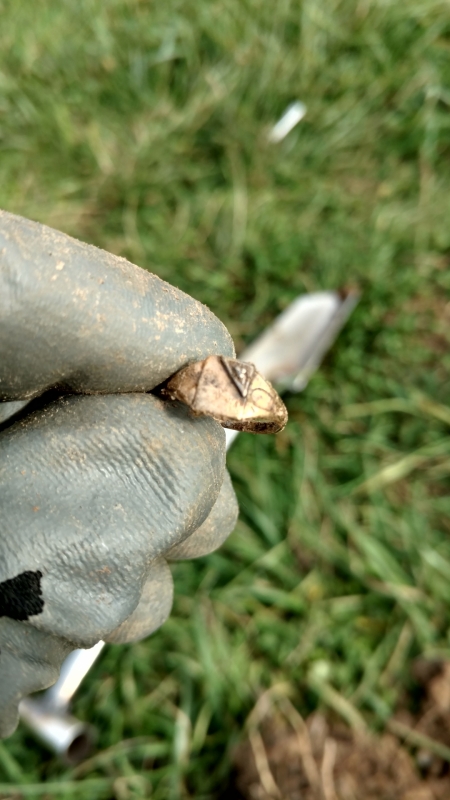Search the Community
Showing results for tags 'jewelry detecting'.
-
In case somebody has missed it: Now that's impressive.. great work, thank you!
-
there had been a good bit of discussion about silver and the Nox not doing well if they were on edge....... which was part of the new update. I played around with the two programs..... again air testing gold.....and i got a bit of a surprise that i should have known. The gold rings i tested on the two programs....... again tested about the same depth wise and i was using thinner ones. I found holding a ring flat....... OR with the ring horizontal (more of the ring surface) going across the coil i got almost identical depth. Unlike the silver coins. But........ running that same ring vertical (having a smaller surface) i lost at least half the depth. So you see how the coil is seeing targets...... it can be thin and long, but if it runs vertical to a horizontal coil it sees it as a small target. So..... on some chains where it see not only the links....... but now also how that chain is laying can matter because it sees less of the chain.
-
are starting to heat up. I spent a couple hours at the sand bar this morning and managed a couple pieces. Nothing to brag about as the stones in the ring are CZ's. The hoop earring is silver plated. There were 3 other hunters out and their finds were meager as well with only one gold ring being reported at this spot so far. The wire mesh I had welded in the scoop worked a dream. The earring back in the pic is just one of many tiny bits it captured saving a lot of time. ? The nut The heartbreak It really felt good to get out and get started on this years "crop"! ?
-
Hit this deep, 10 gram Platinum ring on the beach recently. Initial signal was a faint, choppy tone, jumpy 12/13 ID. After the 1st and 2nd scoops the signal went to negative #'s and gave me the iron tone. After the 3rd scoop the signal was gone. I utilized pinpoint mode thereafter and recovered the target after the 5th scoop. Solid 13 out the hole. Wet sand was hard packed so I don't believe the target was moving or sinking, no water filled the hole. Has anyone else experienced an initial good target going to negative #'s/iron readout? Halo effect on non-ferrous? Positive this target was at the brink of detection range...14" - 15" inches. Impressive depth but I will not trust that iron reading/tone if it is mixed with a positive reading/tone going forward. I run Beach 2 with no discrimination almost exclusively on the beach. GL & HH!
-
Hunting tiny gold jewelry in inland sites is just so different from mainstream detecting methods that unless you do it you don't understand the requirements. #1. EMI stability. Your detector has to be stone cold stable. No spurious noise. None. The signals you are after are small tight signals and you can’t hear them if your detector is making spurious noises. #2. The detector needs to be able to keep its HOTs at low gain/sensitivity settings because: a... You need to be able to focus on the right depth of signals and those tiny signals are not deep. Most of the time they are just down in the grass roots. You want to focus only on the top three to four inches of depth. If you have to run your sensitivity at or near max all you are doing is masking the desired signal response with reports from all the other signals surrounding it and below it. And in cases where the ground minerals are high, the ground itself will mask the response. b... You need to control the coil foot print. In this type of hunting you don’t want coil edge surface responses. You only want to hear what is directly under your coil. Concentric coils work better at this than DD coils. DD coils are ok but you get better footprints with concentric and tighter readings on your meter. #3. The higher the operating frequency, the more important the above become. As the operating frequency goes up, the level of discrimination goes down because the trash targets hit harder and sound better. In other words, the higher the operating frequency the better the trash sounds and responds. #4. Notch discrimination or some other form of discrimination that will allow you to focus just on the signal range you are hunting. The only range of signals you are interested in are in the ferrous/non-ferrous boundary range and the foil range up to maybe the nickel reading. All other signals are distractions. I'm editing to add a number #5. Tiny signal audio boost is a big plus if it can be deployed while keeping original signal response integrity. I'll close with this.....You can take a gold prospecting unit onto a woodchip playground or a sand pit and as long as it can handle the EMI you can hunt with it on normal settings. But if you are targeting sites where good quality, tiny jewelry is most likely to be present, you will be working a lot of turf sites where a prospecting detector's normal feature set isn't going to be very helpful. HH Mike
-
Hi All, I like H.Glenn Carson's books. I like the way he tries to get you into the right mindset for what you are hunting for. I wrote this little article several years ago kind of along his view of trying to get you to think rather than just telling you where to go. I find it helps you to own the information. Maybe some will find it helpful. HH Mike So you want to find gold with a metal detector? There are three forms of gold you can find with a metal detector; gold coins, gold nuggets and gold jewelry. I’m going to focus on gold jewelry, and further refine that focus to just gold jewelry found at inland sites, like parks, schools, athletic fields and play grounds. Tip number one: You hunt gold jewelry with your mind. Next time you are out and about, take a look at what type of jewelry people are wearing. What do you see? Who is wearing the gold? What type and size of gold is being worn? What part of the body is it being worn on? Almost everybody is wearing some type of gold jewelry. It may be in the form of a chain around a neck or wrist, to a ring on a finger, to an earring in the ear, but nearly everyone is wearing something. Married couples have wedding bands. Most post adolescent girls, young ladies and women are wearing multiple rings and often bracelets of some sort. The high school and college graduates are wearing class rings. Both female and males are often wearing gold chains. The males often just wear a chain, while the females often wear a chain with a pendant attached to it. You’ll even see ankle bracelets and toe rings. You will notice some cultures wear more than others. Some cultures will wear more and larger gold jewelry. But there are more things to look for than just culture. Pay attention to life style as well. For example the hip hop and rap lifestyles tend to wear bigger and larger jewelry. Can you say Bling Bling? What type and size of gold? The smallest gold is often worn in the ears. Little round studs and small designs, sometimes with stones. Various size loops. Often it is hard to tell but maybe you can notice what type of backing is used to hold them on. Probably easier to look at the women in your own life or visit a jewelry store or the jewelry counter at a big box store and learn about the different types and styles of making earrings stay in your ears. While you are there, study the clasps of chains and bracelets and the various sizes of rings. The girls/women wear the small diameter rings, ring sets, and often they will contain stones. The women will also wear the small gold bracelets, sometime with pendants, sometimes with stones, and small diameter chains, often with pendants. The men will wear the larger rings and the larger chains, and as mentioned above, certain cultures and lifestyles will wear even larger than normal gold. I was in a gold buyers shop a few months back and I saw a gentleman in there that had to have had at least $5,000 dollars worth of gold chain around his neck. Big links in the chains with big pendants in the shape of initials. He wasn’t selling, he was buying. So you have spent some time studying people and the jewelry they wear. And you have made the trip the jewelry counter or store and looked at how they are designed to stay on the body part they are intended to be wore on. You have seen the various earring retention systems; you have looked at the clasps of chains and bracelets. You have noticed the styles and sizes of rings. The next question is, “How is the jewelry separated from its respective body part?” That is a very good question. How do the earrings get out of the ears? How do the chains get off the neck? How do the rings come off the fingers? There are only two answers to that question. 1) They are taken off by the owner on purpose, or 2) They are accidently dislodged somehow. Let’s look at these individually. The first reason identified for jewelry separating from its respective body part was that it is taken off by the wearer on purpose. What is going to cause someone to remove a piece of jewelry? When I was young I remember my mom and grandmother taking off their wedding bands and placing them on the window sill before they did the dishes. Why? The main reason, of course, is for safe keeping. The item is removed so that it wouldn’t get lost or damaged. Let’s take that same thought pattern outside. So now we are outside. Folks are taking their jewelry off for safe keeping but where do they put it? Where is the first place you would put your ring if you took it off for safe keeping? In your pocket of course! What if you didn’t have a pocket? You’d give it to someone else who did have a pocket, or you’d put it somewhere you were pretty sure it would be safe. Somewhere you were confident you wouldn’t lose it, most likely with other stuff that you had to do the same thing with, or you would put it into something else, like a bag you brought with you. The second reason identified for jewelry separating from its owner is by it being accidently dislodged. Let’s think about that. What type of activity does it take to dislodge something that is designed to stay on your body unless you purposely remove it? Let’s use a men’s ring for an example. What type of activity does a man need to be involved in to lose his ring? He either has to have his hand in something that could potentially remove his ring when he removed his hand, or he had to engage in some sort of activity that would cause the ring to leave his finger. What would cause a chain to be dislodged from around a neck? The clasp has to either come open unexpectedly or the chain has to be caught in something that causes it to break. What would cause an earring to leave an ear? It has to lose its fastener, or be caught in something that would pull it from the ear, or both. How is something that is placed in a pocket or bag for safe keeping accidently leave its place of safe keeping? It has to fall out or be spilled out, or be accidently pulled out. Tip number two: Gold has to be hidden from eyesight for us to find it. How come when a piece of jewelry is lost the owner of the jewelry didn’t recover the lost piece? There are only two answers to this question. 1) They either didn’t know they had lost it, and/or, 2) It was lost in some type of media that could hide it from their eyes. There was something that prevented it from being found by only looking for it with their eyes. It could be sand, woodchips, gravel, grass, trash, leaves, anything that once something is dropped onto it or into it that makes it difficult to find with just your eyesight. Tip number three: Learn the loss characteristics of the items you find. Seek the answer to the question, “Why did I find what I found where I found it?” Once you think you have the answer, validate it by hunting other areas where that loss characteristic could be repeated and see if you find jewelry there. A validated loss characteristic is more valuable than the jewelry find itself. A few examples where I have found something and identified the items loss characteristic(s): I found a nice herringbone style 14kt gold chain on an athletic field. It was intact and the clasp was attached to its respective counterpart. The guy would have had to lose his head in order to lose the chain. But here it was down in the grass and there was no severed head with it. So how did it get there? This is an example of an item that was taken off for safekeeping and then lost. It wasn’t torn off, or flew off over his head, this had to come out of a pocket or bag, and I believe it was from a pocket as it wasn’t in a location where bags and such are normally staged. So what activity would normally take place where I found the chain that would cause it to come out of a pocket? Since it was a soccer field, I deduce it was something to do with running or perhaps falling down. I have found many items on athletic fields that were originally placed into a pocket or bag for safe keeping that was then subsequently lost. I found a little 10kt gold chain and pendant with a broken chain in the sand at a school playground. It was quite obvious from the broken chain that it had been torn from a child’s neck in some type of play activity. From the equipment around the find, along with subsequent chain finds in the same area around that equipment I deduce it is a great area for games of tag or some such activity as all the chains I found in that area have been broken. (a validated loss characteristic) I found a nice 14kt gold wedding band with three .20 carat diamonds mounted on it about five inches deep in some woodchips. Studying the situation, it was easy to see that a parent had been sitting on the curbing around the play ground, leaning back with their fingers buried in the loose wood chips watching their children play in the adjoining playground. When they removed their hands from the woodchips the ring was left behind and the parent either didn’t notice the ring was gone or noticed it but couldn’t find it. (validated loss characteristic) I found a nice wide wedding band near a goal post on a soccer field. It had obviously been left for safe keeping in that location, either with other possessions, or by itself and was either not recovered or fell out of a bag when the other possessions were recovered and hidden by the grass. (validated loss characteristic). Ok. So you have figured out the most likely reason a piece of jewelry was lost. Now what? Once it is understood why or how a particular item was lost, the next step is to seek out places where that particular loss characteristic can be repeated. Tip number four: Don’t dig trash, dig gold trash. Gold jewelry is a low conductive target on a metal detector and is found in the same range as aluminum trash. It is often a small target. Remember all those earrings and chains and rings and bracelets you saw at the jewelry counter? Small, low conductive objects that hide in the aluminum trash range can be tedious and hard to find. Even more so if you have to factor in ground minerals that can skew or even hide the signal of the jewelry item. So let’s think about that; small valuable targets mixed in with small aluminum trash that produces the same type readings on your metal detector. That means that to find the gold jewelry you will also have to sort through the trash. Doesn’t sound very promising, does it? Am I saying that to find the gold you have to dig it all? Nope. That is not what I am saying at all. What I am saying is that to find gold jewelry you have to dig all targets that have the highest probability of being gold. Now there are sites like woodchip and sand playground areas where you will want to recover every signal. But to do the same thing in a high use grassy park, athletic field or playground, trying to recover every signal is counterproductive. From your visit to the jewelry counter, you may have noticed that some of the chains have quite a bit of weight to them. A nice gold chain is a good find! Good money! So off I go to hunt chains. I’ve already used my mind, located a promising turf spot to hunt for chains and start digging all the pull tab signals. Hours later I have a hundred plus pull tabs, but no gold chains. Why? I was digging the wrong signals. Pull tabs would be the right targets to recover if I were hunting large rings, but worthless targets to recover if I am hunting gold chains. Especially so if you were in a site that you were confident would produce chains but not large rings. Get the picture? Let’s look at it a little differently. Let’s say that I get to my chain site and start digging all the signals. Now I have a chance to find a chain if it is there, but because I am digging everything I make very little progress on my site coverage, using up energy and time on non-chain targets. I have essentially cut done on my odds of actually finding the target I went out to find. To have the best odds of finding that gold chain I went looking for, I need to focus on signals that could actually be a gold chain and only recover those signals that could actually be a gold chain. Which leads to: Tip number five: the more ground you cover, the better your odds of recovering what you are looking for. By focusing only on the signal I’m after I can cover more ground and increase my odds of actually finding my desired object, which in this example is a gold chain. Tip number six: Gold is where you find it. Gold prospectors have a saying, “gold is where you find it.” That means that you hunt gold where it has been found in the past. Believe it or not, that same saying is true for jewelry. The characteristics that cause a piece of jewelry to be lost and hidden for you to find it with a metal detector are apt to be repeated again and again in the same location. When a gold prospector finds one nugget, he hunts the area carefully again, hoping to find another. When he does find another nugget in the same vicinity, it is called a “nugget patch”. As inland jewelry hunters we, too, are looking for a “patch”. In our case, a patch is a site or location where a particular loss characteristic can repeated again and again. We are not looking so much for that random find but rather that site location where that loss can be repeated again and again. That is a “patch” for a jewelry hunter. A successful jewelry hunter locates patches and then hunts his patches. Many of my jewelry items have come from the same locations that I have hunted again and again, another words, I have found them in my “patches”. Tip number seven: Hunt clad (modern coins) to improve your site reading skills. You say, “Well Mike that is all well and good for you. You have been doing this for a while now and know where to look. What about those of us which are new to the hobby, or maybe coming over to inland jewelry hunting from hunting relics or old coins?” My answer to you is to ‘hunt clad’. Sounds counter intuitive to hunt clad to find gold, but it’s not. Just like the relic hunter hunts for the iron to find the hot spots, so the inland jewelry hunter hunts clad to find the hot spots in parks, athletic fields and school playgrounds. Remember, unlike relics or old coins, jewelry is lost on a daily basis, just like modern clad coins, and often for the same reason. Clad will validate your site reading skills. Recovering the gold: The equipment. If you are going to focus on inland jewelry hunting with a metal detector there are certain features that make it easier to find. Just like any tool, the more appropriate the tool to the task, the easier the task becomes. Working on your car is much easier and efficient with a socket wrench set as compared to having only a pair of vise grips. You could still get the job done with the vise grips in many cases but it would be a tedious and tiring affair. The same thing can apply when it comes to your jewelry hunting tools. You can find jewelry with any metal detector, but it is easier if the metal detector has certain features. The first feature your detector needs is the ability to focus your attention onto your desired target signals. The easiest way to do this is with tone ID. Tone id allows you to discriminate the audio signals with your ears. If you are hunting ladies rings, you have to be able to tell the foil signals apart from all the other responses. Tone Id allows you to do this fast and easily. The better you can focus the tone id onto a certain conductivity range, the better the detector will function for jewelry hunting. A second, and a complimentary feature to tone id is Notch Discrimination. Notch Discrimination is the ability to discriminate out (or in) a range of target signals independent of the base discrimination setting. Again, focus is the key. The more you are focused on the desired signals, the more of the proper signals you will recover for the amount of area searched and the greater will be your success. The third feature is sensitivity to small low conductors. Traditionally this has been accomplished by using higher frequencies units, and is still preferred; however there are some machines on the market today that can give the needed sensitivity with lower frequencies than has been used in the past. Still, the bottom line is that your detector needs to be able to put out some heat on the lower conductive targets. The forth feature is recovery speed. How fast the machine resets after reporting so that you can hear the next target. This is important as the objects you are looking for are lying next to, below, or above other objects that you are not looking for. And they are small. My first gold jewelry find was two gold rings on a large paper clip. The paper clip response nearly completely masked the ring responses but the Fisher CoinStrike I was using at that time had a fast enough response speed that I was able to hear them as distinct, separate signals. I consider those the four most important features a metal detector needs to be a useful gold jewelry hunter. If you live in an area where the ground minerals are influential on signal responses like I do then you have to include ground cancelling features. There are other factors that can make one machine better than another like visual signal presentations, coil selections and such like. But as long as you have a unit that is fairly quick responding and will let you focus on a desired signal and put some heat on it, you are good to go. HH Mike Hillis
-
Well today was beach hunt #7 with the Equinox. There wasn’t a lot of detecting room, with the way the tide was today. Also, a lot of people walking and laying out on the beach. It’s getting crowded out there. I was hoping to keep the streak alive today and I didn’t have to wait very long. First good target was the pink stone 14 K Gold ring. I almost didn’t believe it. That made the rest of the hunt less stressful and more enjoyable, as the gold streak would continue. But I didn’t expect to get too much more, but the finds kept coming. All the time I just kept shaking my head, I can’t believe what Minelab has done!!! 4 gold rings, some silver and a small amount of clad. The broken class ring was found in 2 separate holes about 60 ft apart. The breaking points match up perfectly…they were part of the same ring. The tiny targets were out in full force, as well as the pull tabs too. A small price to pay for the good finds that can come with it. Probably the smallest chain this machine can pick up. Had a hard time locating it once it was out of the hole. I was glad to get out today… a picture-perfect weather day!
-
Patch Gold = A patch is a hot spot with the right ingredients (cover, clientele, and activity) to allow re-occurring jewelry losses over time. Patch Gold is gold jewelry found in this hot spot. This is nice piece of Patch Gold from one of my patches. 18k White gold with a very pretty diamond I found a few weeks back. HH Mike
-
I went out early this morning. I was expecting a cut as there had been a 3 hour period of high waves during high tide. As it turned out it was more of a 'blow over' than a cut so after about an hour it was time to move. My next beach was less blown over so I settled in for a bit. Finally I found a few quarters and that can mean rings! So it was today. My first ring was the 18. This made me circle, grid and look near for another. About 20 feet away I got the 16. Nice 2 ring morning before 7 AM. I kept hunting and found the cheap tennis bracelet and then I got the 8, the 3rd ring. I'll give the composition of the ring and you tell me which number goes with it. I'll come .back Thursday Night and tell you the number that goes with the ring There is a copper ring in the top center. There is a silver .925 ring on the left with a nice little amethyst. There is 18k GP ring with a larger glass or crystal on the right. Mitchel
-
But the wrong kind Had to hunt the beach for a while before the sun and wind broke up 1/4 inch of skim ice next to the shore. As expected very few signals of any kind but did manage a small kids size 925 silver bracelet wgt 3.5 grams I really enjoy using the Fisher ID Edge for working the near shore iron and pulling out the small low conductors.
-
OK , not all by the Equinox but nearly all are . The Equinox had 3 Silver rings on Saturday last . So far the Nox has had 1 x 18 k Gold with a yellow stone in . 1 Silver Bangle , 1 Silver Chain , 2 x Silver Pendants and 12 x Silver rings out of the 17 i have had this year so far and £141.60p in coinage . The remaining rings and Chain were with either the ET / 705 or Explorer 11 , they have had much more in coinage overall . The other 2 Gold fell to the Explorer 11. I should be getting my second Equinox soon , that will complete my Arsenal till a new ET comes out .
-
After reading and rereading all the comments of the forum, decision for model 600, I think that for my needs, that is enough for me. I arrived yesterday and did a little test at home, since Steve has said many times that he does not have the gold program but that he can do equally well in other programs. This test is in park 2 mode and sensitivity to 12, since I am inside the house
-
I detected a school very close to my home that I have hit extensively in the past and have always wanted to pull a gold ring from it. It has been 9 years that I have detected it without success using an AT Pro, Teknetics G2, an MXT, and an E-Trac. I was out for one and a half hours today. Tracking was on, 50 tone, 23 sensitivity, and 7 for speed. The ring on the left is silver but the stones are fake. The Moon is also silver. The ring to the right of that is gold. The two other rings are junk. The charm bracelet is also junk. I found the rings among very heavily foiled junk. The silver ring came in at a 24, the gold ring came in at 16. As you can see, I did not dig much trash. The Rings were easy to tell that they were something different than the trash around them due to their numbers sticking out as different from the trash and pennies. My first hunt with the machine was March 10. Average for me was about one gold ring every 6 months or so. This machine ups my average!
-
Current summer temp forecast for the US. I love it when people spend more time in the water loosing their precious. Some of my better bling finds...
-
http://metaldetectingforum.com/showthread.php?t=258044
-
-

Got Call Today To Try And Locate 2 Carat Diamond Ring
Guest posted a topic in Metal Detecting For Jewelry
Lady is an attorney. I detect on her farm occasionally (350 acres). Said she lost ring day before yesterday and thought ring was lost when removing her gloves. Ring was lost supposedly in a goat barn. Yep she is a goat farmer too. One problem though she was feeding the goats feed and hay in this portion of goat barn where she thinks she lost. I swept the entire area (detectable) using Deus detector. No luck. May go back and take rhe Nokta Impact with smaller coil and try again. Remember the movie Gone in 60 seconds. Lol -
I am using the Minelab Gold Monster 1000 here in Oahu. So far I have found 16 gold jewelry items. And yes, I do dig a lot of tin foil and many small pieces of other types of metal. Most of the time, I can operate in manual sensitivity level 9 or 10. In some areas, I do have to switch over to auto sensitivity + to be able to hunt. I do have high hopes for the Equinox 800 here.
-
Finds first for the TLDR people. As the finds in my current primary patch dwindle in numbers from being worked heavily the past two years, I'm scouting for a new primary patch to begin working. Using the criteria and method outlined in a previous post, I've located a very good location that is certain to hold gold, silver, and more. Today will be my first time boots on the ground at that location and I'll walk the reader through it along with my scouting method. Maybe it will help someone and provide insight or encouragement. Here is the sat. view 5 playgrounds, one skate park, basketball, tennis, two soccer fields, two softball fields, two shelters, one former 1890's to 1950's church location on site. Here are my paths while scouting. Deus in red, V3i in green. So, from the sat. images there are many hot-spots to strike, and I won't try to get them all as this is a long term prospect, and I only desire to determine 3 primary things today. 1. Pressure - hunting pressure from other detectorists. 2. Trash composition and density. 3. Presence - Is there jewelry where I expect it to be. Deus gets the top spot today as it's the ideal scouting unit. Light, fast, great tones to read the trash. From the parking lot I begin and move to the skate park since it's close and can hold silver and junk jewelry along with lots of coins. Foil seems to be the primary trash along the way, and around the skate feature the aluminum kicks in - light can slaw and tabs primarily. I can hear lots and lots of coins, zinc and copper cents mostly, but a healthy quantity of dimes as well. I select a few targets I know are quarters and pennies, then intentionally sample some of the larger better sounding trash before moving on. The primary traffic flow from one side of the park to another is divided by a slight drainage ditch with the easiest pass being on either end... and people naturally take the easiest route, so I do too. Pennies everywhere! Zinc mostly, healthy dose of copper, decent selection of dimes, quite a few quarters...light trash mostly foil and ferrous bits... but I keep on moving through without digging a single target. Not interested today. Moving to the goal at the primary soccer field I work my way over to the nearest corner, then down the sideline to mid-field before cutting over to the center. Then I work my way to the opposite goal before coming around the back net. From there, and because of its close proximity to the goal, I briefly enter the playground before hitting the nearest corner of the soccer field diagonally opposite from the first corner I hit. Quarters everywhere! I decide to spend some time here sampling, cherry picking the best sounds. Within 10 minutes I found the heart pendant necklace. Jewelry confirmed, nice. So I pause, crank up the notch to 93 and take all the quarters before moving on. Erasing the notch I notice an area of the playground is different. Something was removed and not replaced. I suspect one of the super dangerous merry-go-rounds that children today get no experience or joy from used to be there. Clad everywhere....move on. Swing-set looks vintage so I check that and the mostly abandoned softball backstop area nearby. The trash picks up and bottle caps start to appear below the coil. I dug a first (for this park) beavertail ring pull, nice...a sign there might be some silver coins lurking around here. I'm getting hot by now so start thinking of shade and where to find some. It's scarce, so good places to concentrate. I mentally discriminate everything but quarters. Lots of nice signals, lots of trash and rusty caps. So far this is the trashiest area and I'm impressed it's not worse. Out of water and thirsty, I head back to the parking lot where I started, taking any quarters I come across. There are so many coins around it's obvious to me this park has never been heavily worked over by much of anyone in a long time, if ever. This place is a clad mine. Exactly how my current patch started out! I switch out units for the V3i and head towards the nearby secondary soccer field goal. I work one small corner of the goal net taking everything in a 6 foot diameter...clad and tabs mostly. Then I work right down the field towards the only clump of trees between the two fields and casually work the area randomly, still cherry picking signals but expanding the range down below zinc cents a little plus taking all nickel range targets as I find them. Getting tired and hot I'm thinking of wrapping it up so I head out to the sideline and try to find the trash zone where people sit and spectate. There isn't much trash to detect so I decide to just pick a line inside the playing field and take everything not obviously trash out of the ground. As I reached the corner of the field the silver ring shows up. Someone threw the ball into play and lost a ring perhaps. Now we're talking! Satisfied with the mission I walked off and swung over the curb area near the parking lot to get a feel for the trash there, too. With light to moderate trash, tons of clad signals, two pieces of jewelry - I have all the intel I need to know that this park is going to produce a few gold items, eventually. I'm hesitant to give 5 stars so we'll rate it at a 4 plus star park, IMO. Next hunt the tedious process of clad layer removal begins, oh, joy. Thanks for your time. Good hunting.
- 7 replies
-
- dfx vx3 v3i
- xp deus
-
(and 1 more)
Tagged with:
-
Hi Guys! I've been back home in Indian Harbour since Tuesday night. We still don't have electricity, but we do have a generator, which runs the air conditioning enough to keep it almost tolerable in here. Florida LP says everyone on the east coast will be back online by Sunday. We'll keep our fingers crossed, because it is HOT here. So in case anyone is curious, I have been hunting for the past 2 days (duh). Four different beaches near Melbourne, and pretty much all the same conditions. First, the hurricane DID take some of that "renourishment" sand away. I'm pretty sure the sand was up to and level with the end of this boardwalk before Irma. (photo 1) No cuts to speak of, unless you count the cuts into the dune line. Just below these cuts were where I found crusty old coins. (photo 2 and 3) With the extra sand gone, it's just a gentle slope from the dune line all the way to the water now. Very few rocks showing at low tide. (photo 4) Before, there was the dune line, then a "hump" of added sand, then a fairly steep-ish grade down to the water line. Lots of the coquina rocks were showing at low tide. (photo 5, taken about 2 months ago) I'm not finding much except very corroded clad coins, which seem to have been buried for a very long time. The oldest was a 1958 nickel. You would think with a couple of feet of sand gone, there would be lots of targets. Nope. It's like Irma came in, scraped some sand off the top, threw the rest in a blender, then dumped it all back on the beach and smoothed it down nice and flat. The only good thing I've noticed is that most of the aluminum trash seems to be gone. I was using the Infinium all the way up to the (new) foot of the dunes yesterday. I'm thinking that any gold or silver was churned up and sank even lower when the waves were taking the sand away. Those cruddy tent stakes, which I don't dig, were buried DEEP in what I think used to the be towel line. Sadly, I saw quite a few turtle eggs which had been exposed, then eaten by the feathered rats. I'm going to try to go to a good touristy beach, maybe Cocoa, Sunday. I'll let y'all know if I find anything, if you're interested. Ammie
-
I recently bought a new T2 classic and have been trying to use it a couple of hours every day. Today I got a weak nickel signal, fairly consistent 54-55 at an indicated 7 inches. 2 inches down was this chain in a tightly wound together mass. It is marked 14k and broken in 2 pieces as you can see (have not done acid test). Untangled the mess and loosely dropped it on the ground to get a reading, a weak and fluctuating 35 and lower......YIKES. In all truth I would not have thought twice about that weak 35, going to have to reset my thinking. Liking the T2 but I can see it will take lots of hours to be as comfortable with it as I am with my Gold Bug
-
I've been working the Humboldt County Fair Grounds with my F75 for awhile and getting a daily ration of pocket change from the junk but no love finding a ring. Today I was reading about you using your F75 for nuggets and in particular digging a tailing pile and digging a 22 signal that was nice and consistent. I know all gold does not read 22 but I got a nice 22 signal that was solid and up comes this little ring! I was successful because I got out of the mindset of just digging coin signals and started digging solid signals even when they are in the foil or zink range. It was you comment on digging a 22 signal that stuck and clicked for me. Thanks so Much! Tim
-
I came up with this crazy idea to attempt finding gold in a public park chosen by another detectorist, MontAmmie, and do it within 24 hours total hunting time. MontAmmie chose a park called Northcreek Park in an affluent section of Ankeny, IA. I've done no research on the park yet, but I know it's relatively new. I'm familiar with the area, so I dressed to fit in so as to draw the least attention...dark blue polo style collared shirt, nice graphite grey pants, new running shoes, sunglasses...not my normal detecting attire at all. Seeing the housing all around the park and all the windows, I know I'm probably going to be under somebody's eye at all times and so I need to act accordingly, like it's my neighborhood park. Today I had a bit of time to scout the park but the timing was totally awkward. I arrived at 2:30, was swinging and walking by 2:35. Immediately I was on the radar of two younger mothers at the tot-lot. I wasn't sure if they were on the phone with the police but it felt strange when they kept starring and making calls. I expect to meet Ankeny's finest before this experiment is done. The really awkward part came when school let out at 3pm, or just before. Elementary students and more than a few parents were, by the dozens, filtering through in waves. Had quite a few odd looks and very few smiles with no wave-backs. This ought to be interesting as we go forward. The soil conditions today were extremely dry and hard. This is high, well draining land and we're still struggling at the tail end of a drought. Screwdriver only because of drought conditions and curious eyeballs. I wanted to take pictures, but that too seemed awkward. I'll pass while kids are around. So I avoided the tot-lot and shelter area by a wide margin, crossing a playing field to the rear and hunting mostly at the soccer field. I recovered 5 targets total in 45 minutes. Foil, foil drink seal, a zipper, two canslaw pieces. There was very little surface trash but I went out of my way to pick it up and making it obvious while knowing that people are watching. (I picked up more trash items than I recovered today) Perhaps that'll help keep the non-emergency calls to zero. I did some probing of targets below 2-3" with the screwdriver and without attempting recovery. Large hunk of metal and canslaw. Seems the whole area has been heavily graded. There are few shallow signals and greater quantities of deep signals. Scattered iron bits in places and vast areas with no signals whatsoever. I had a 10 minute stretch where I couldn't hear anything but ground noise. This is like farm field hunting, because that's likely all it was before being developed. The most common signals were in iron to foil range. I heard a few coins down there while near the soccer field, but too deep and dry for my small screwdriver. The areas by the bathrooms and trash cans were also remarkably clean with very few signals around them. Totally different from my normal park hunts. I stepped back into the parking lot at 3:15 concluding todays scout. Today I used the Deus to move fast and feel out the place. Next time I'll bring the 15x12 sef coil mounted on the V3i to move fast and clean up the top 4-5 inches. This combo is ideal for large portions of this park, perhaps all of it. I'll do a little research on the land's history before then too. MontAmmie thought there might be sledding hills making for a good lost jewelry location, and the sledding hills can be good areas, but the reality here is less than idelal in that the largest sledding hills at this location are about a 15 foot drop over 40 feet. Those are on the East/NE border of the park. There may not be any gold here at all, and my expectations are low, but I'll keep trying because it's early in the challenge and I still need to hunt at a more low-key time. I'll get some images up after the next visit.

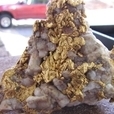
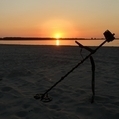

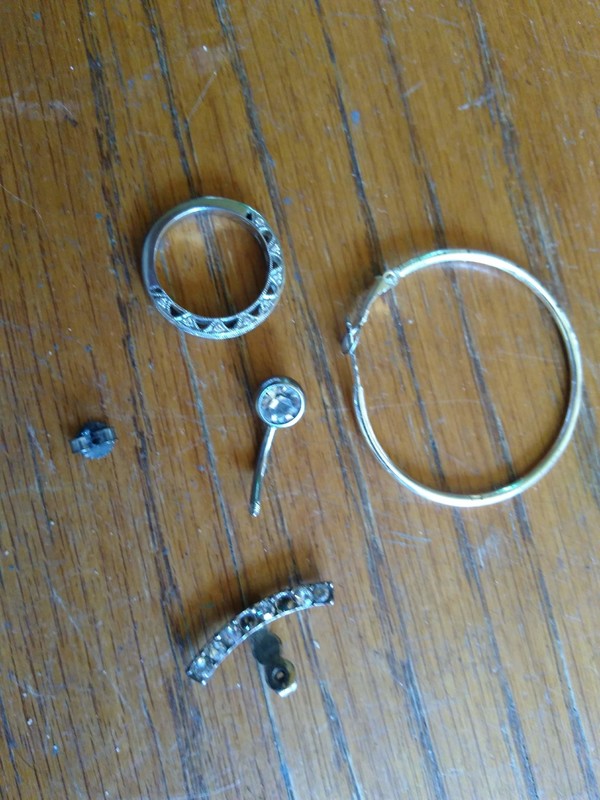
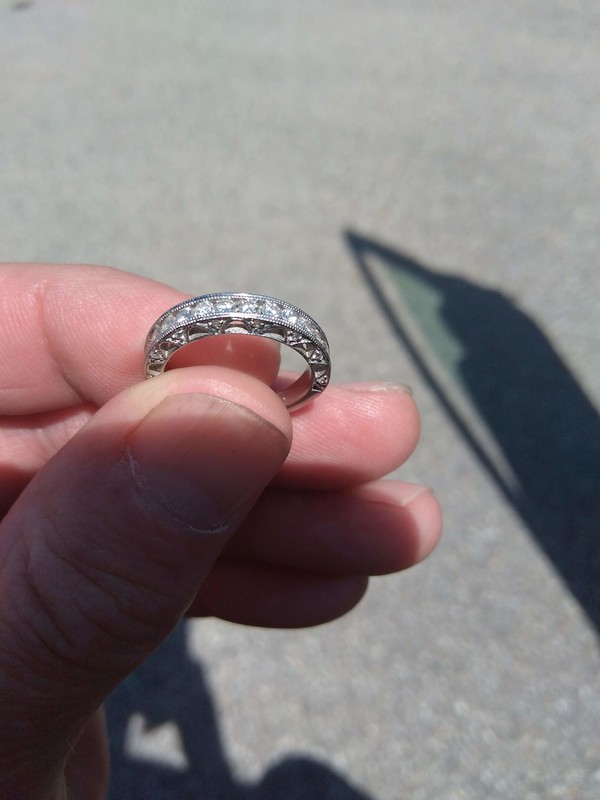
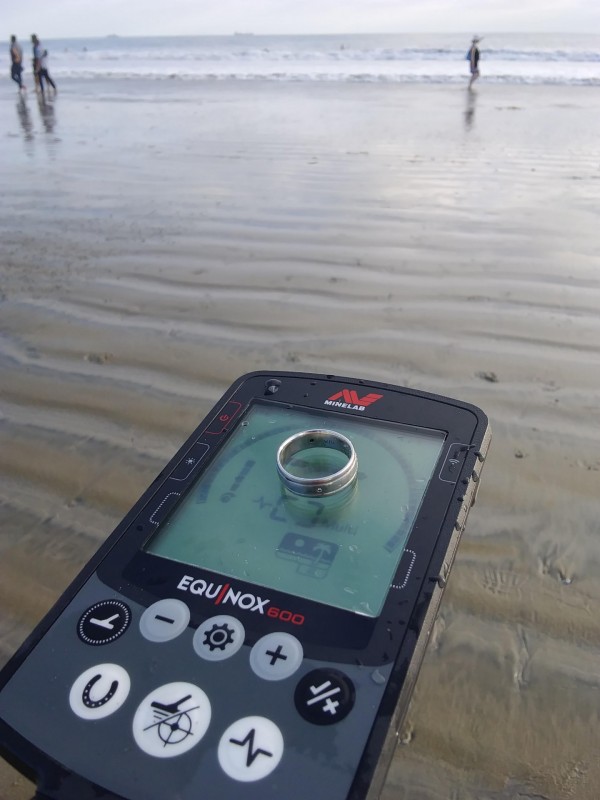
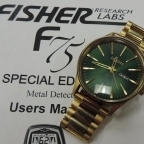
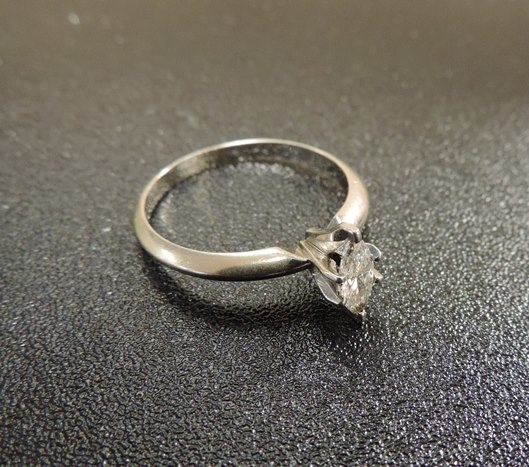


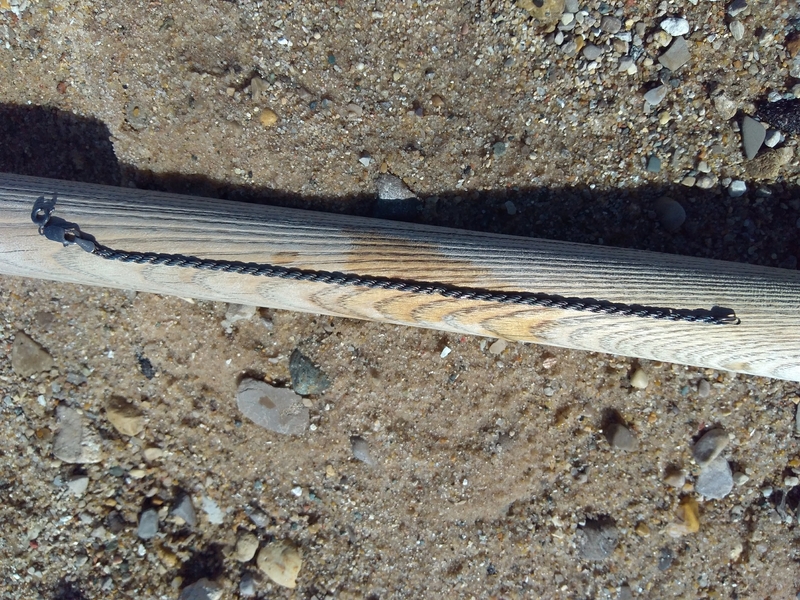
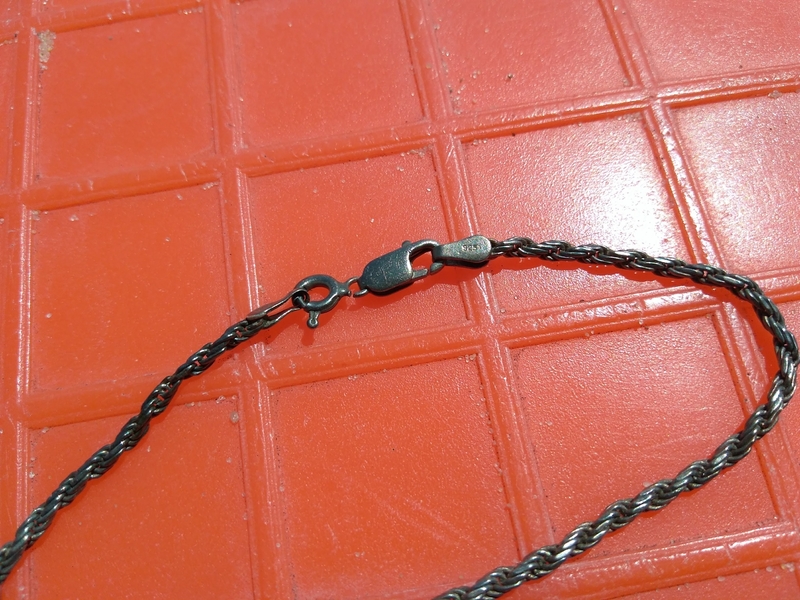

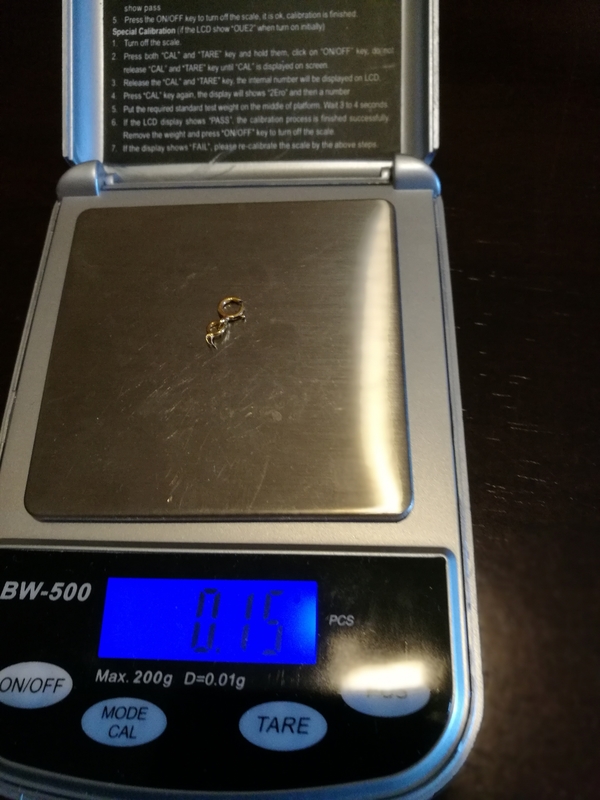

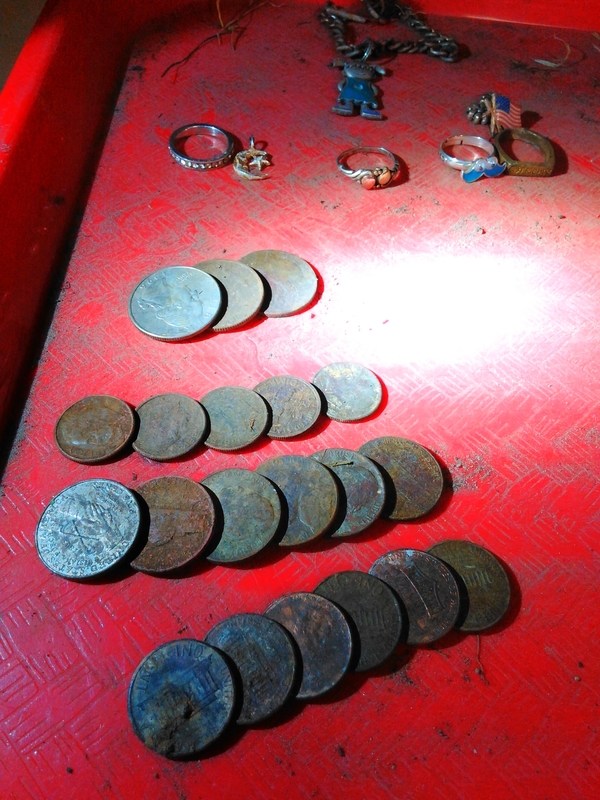
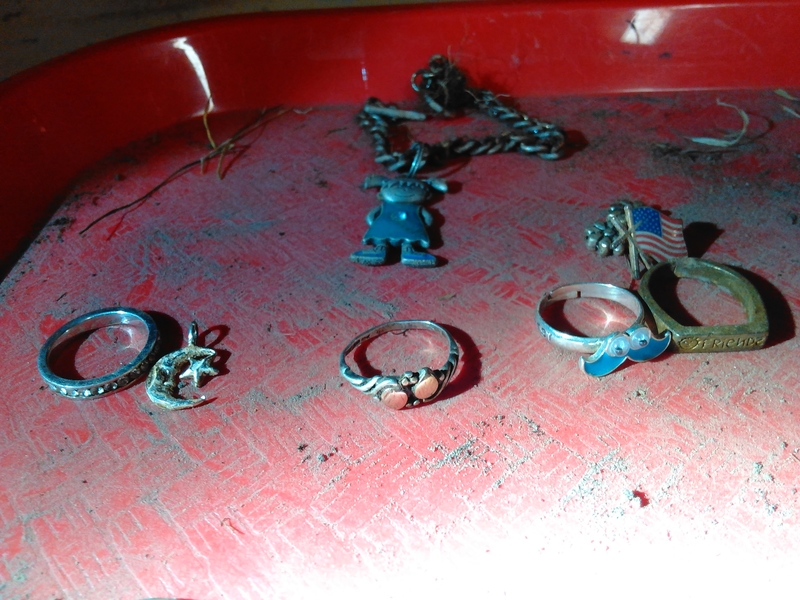
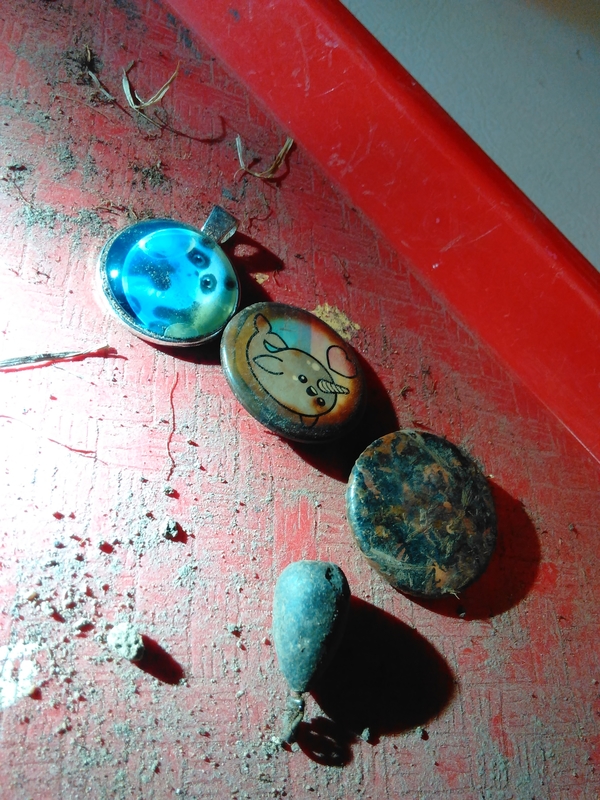
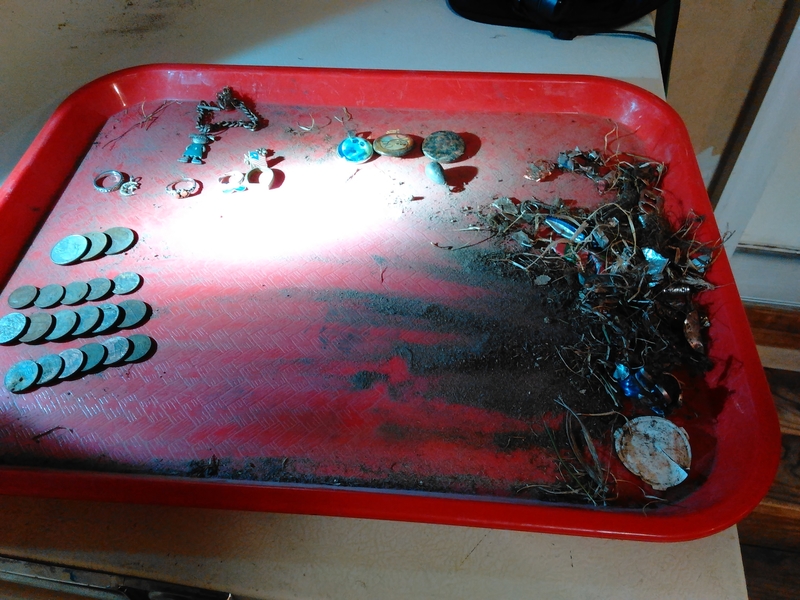
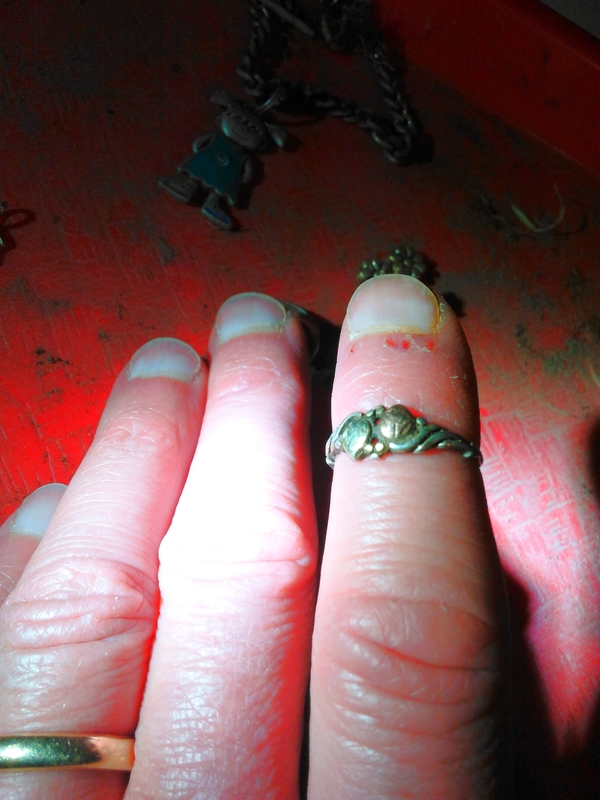
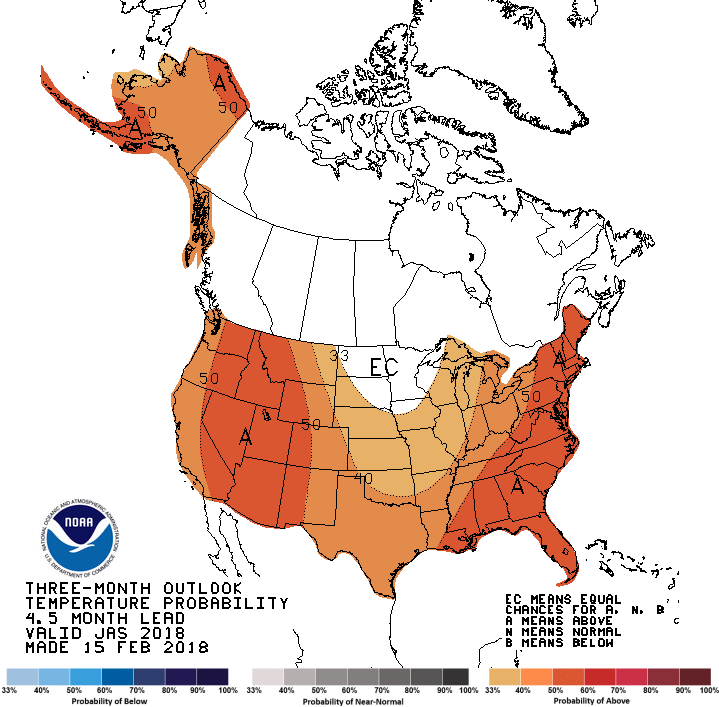
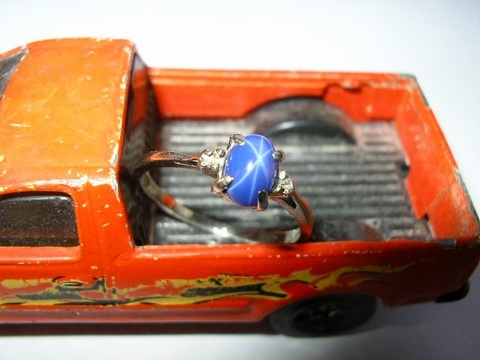
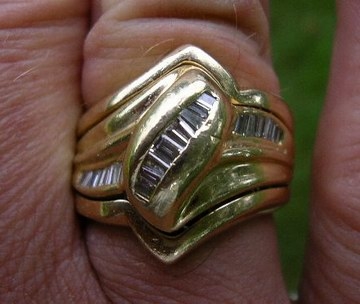
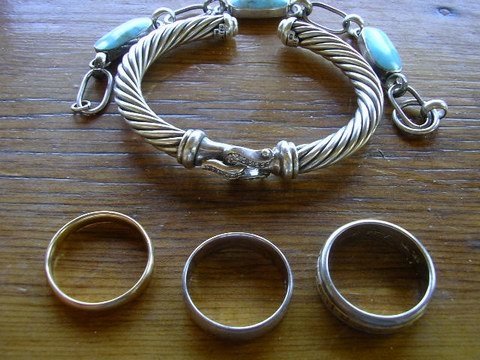
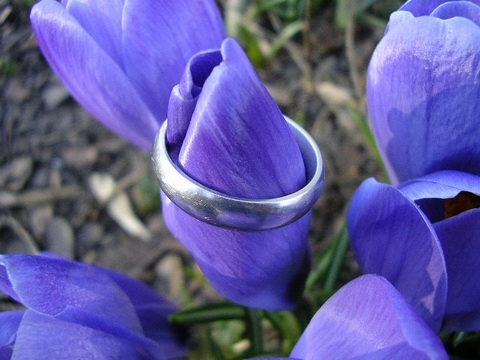
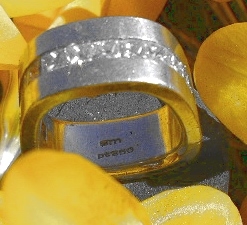
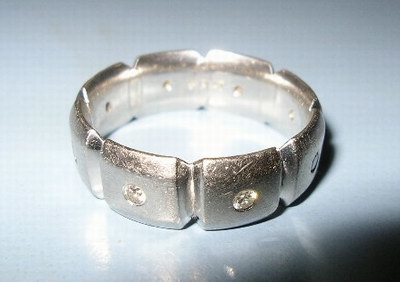
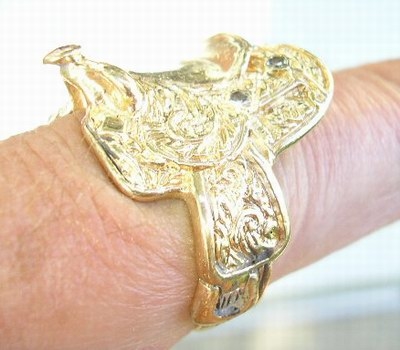
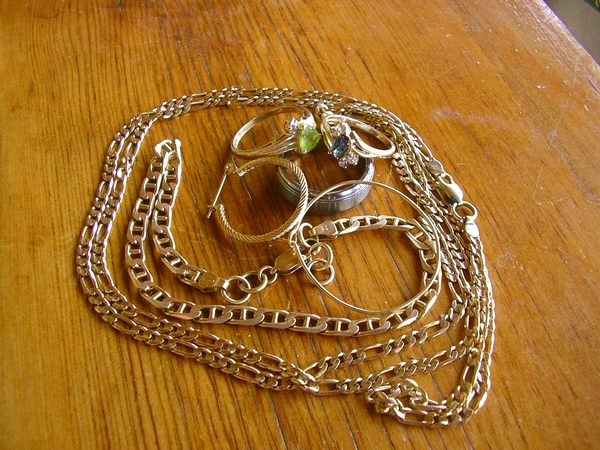

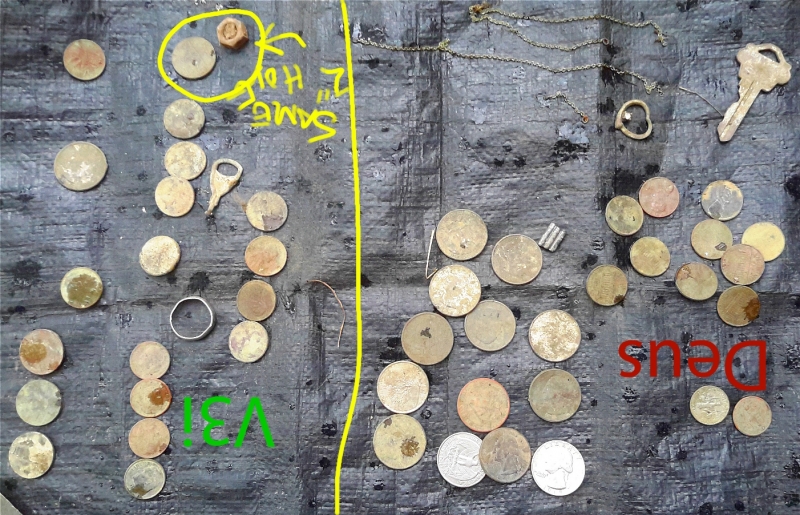
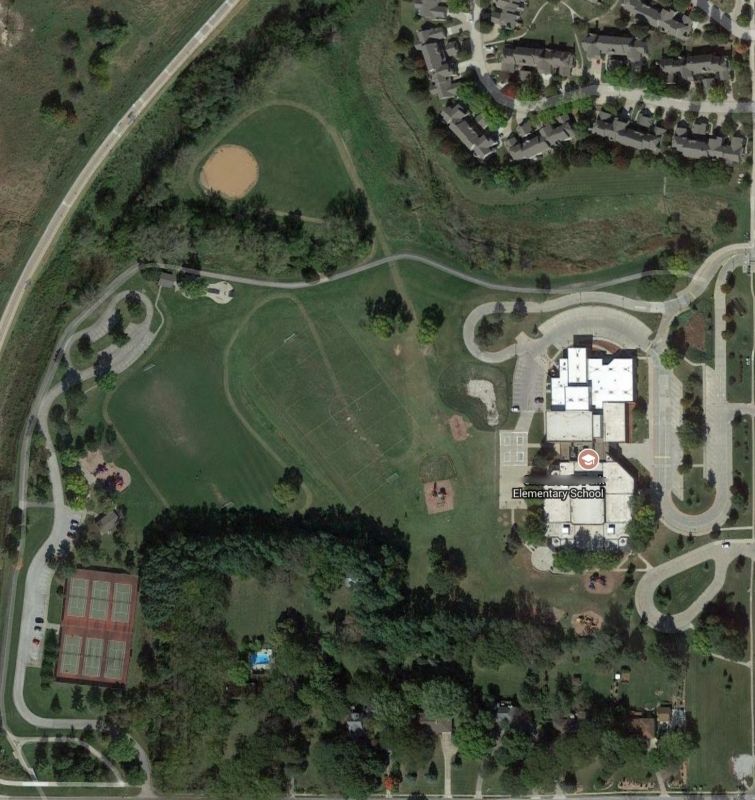
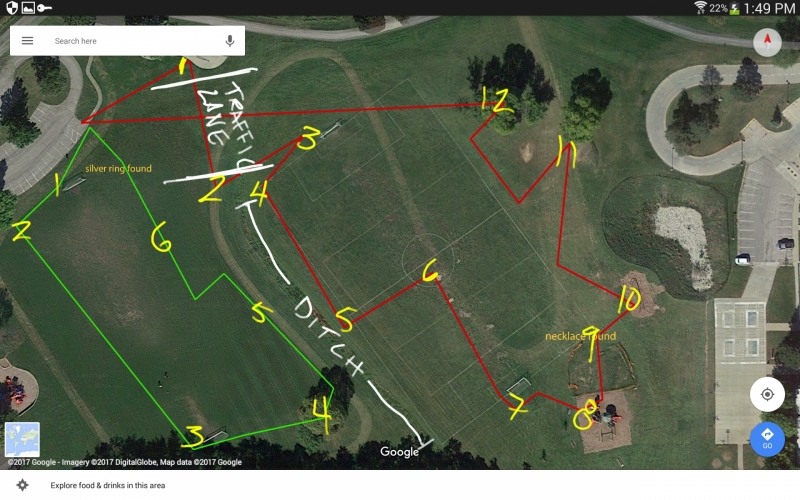
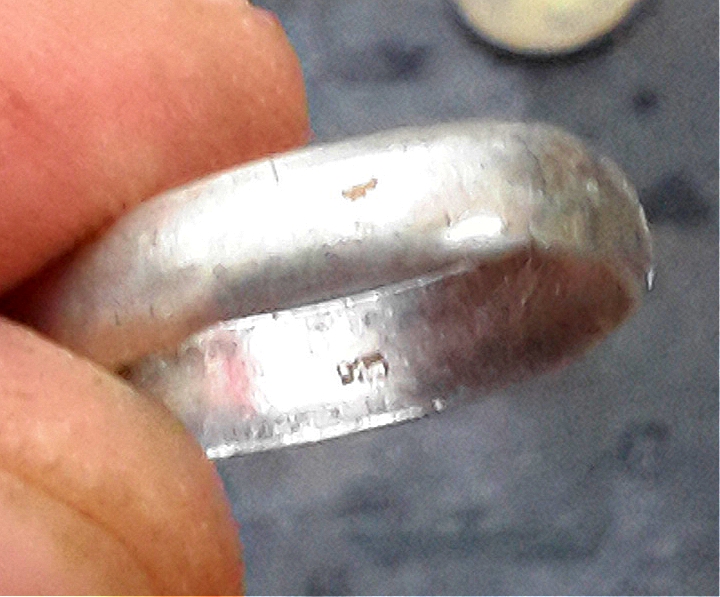

.thumb.jpg.c9827af5c443e8c91fc9cf80ac19de77.jpg)
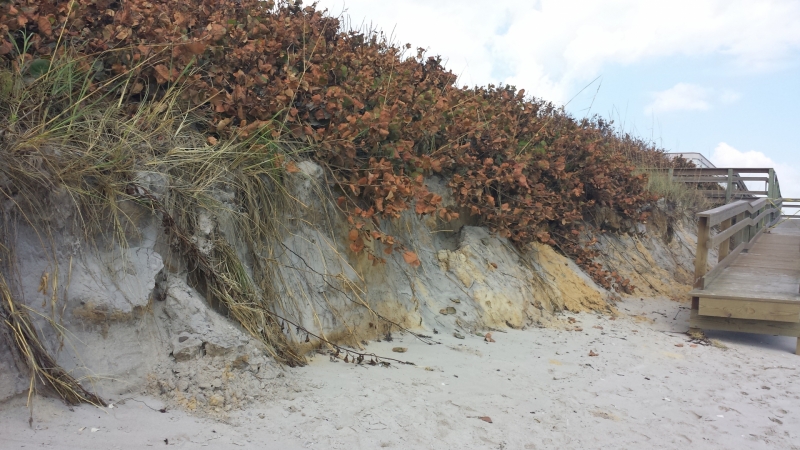
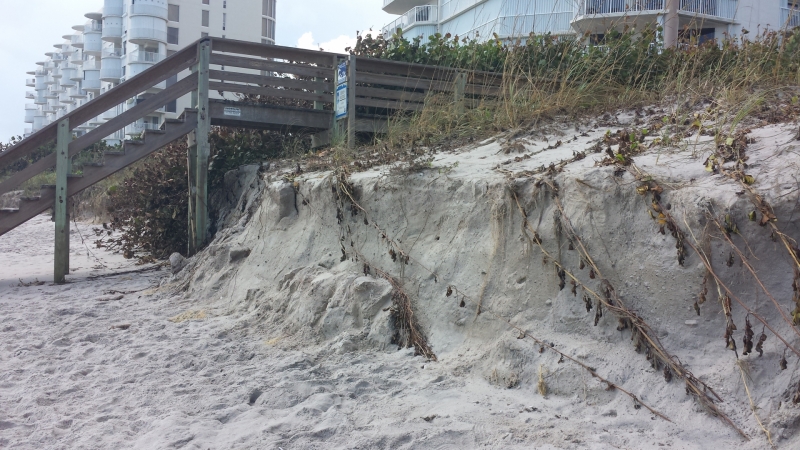
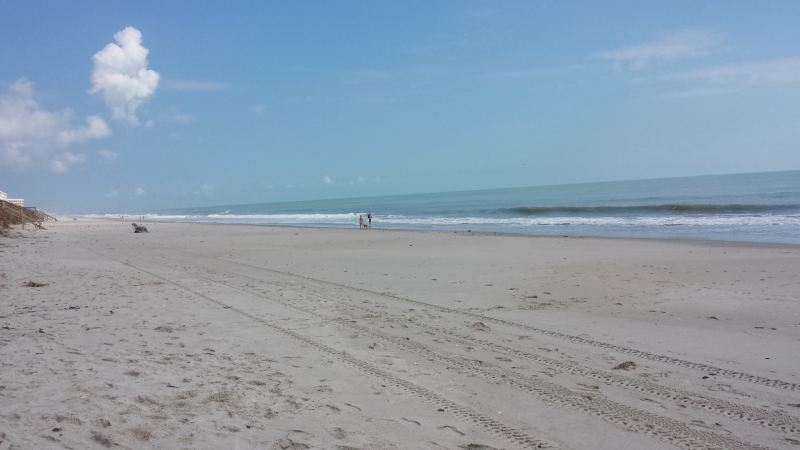
.thumb.jpg.b658754448658a83adfd977fba0b91c9.jpg)
